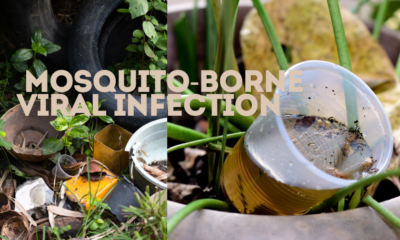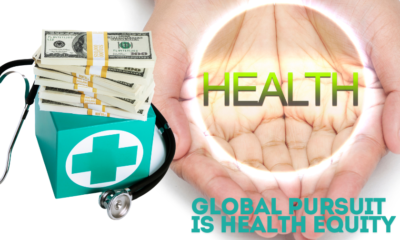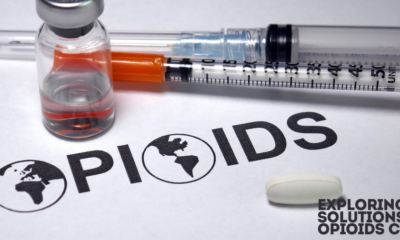Public Health
Stroke Prevention and Recovery: Steps to Reduce Your Risk
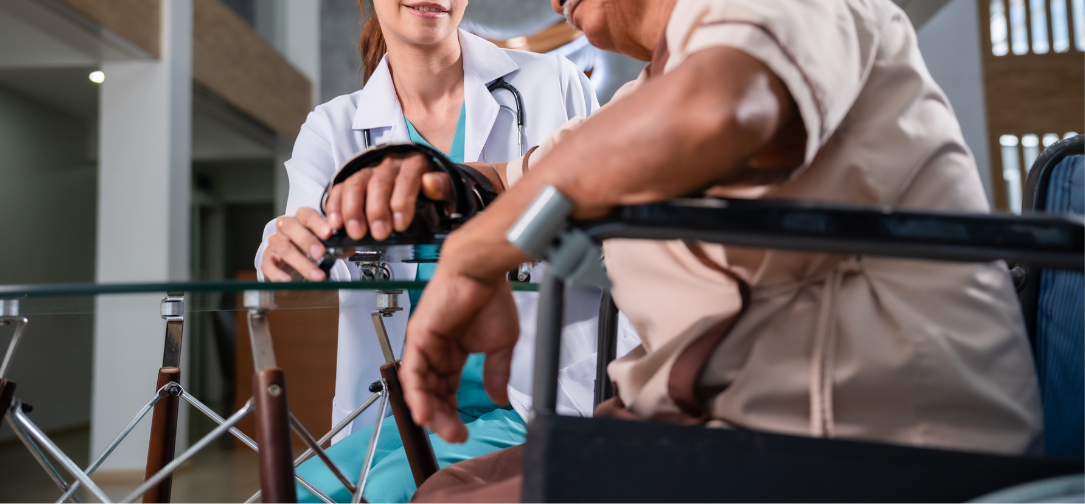
The worst leading cause of death and disability worldwide occurs when blood flow to the brain is interrupted or reduced, depriving brain tissue of oxygen and nutrients. Within minutes, brain cells begin to die. This sudden medical emergency not only affects millions of people each year but also leaves a lasting impact on individuals, families, and communities. Understanding stroke prevention and recovery is critical to reducing risks and promoting better health outcomes. In this comprehensive article, we will explore the types of strokes, risk factors, prevention strategies, and recovery steps to help individuals reduce their risk and improve their chances of recovery.
Types and Causes
Strokes are classified into three main types, each defined by the underlying cause of the disruption in blood flow to the brain:
Ischemic Stroke: This is the most common type, accounting for about 85% of all strokes. It occurs when a blood clot blocks or narrows an artery leading to the brain. There are two main types of ischemic strokes:
- Thrombotic Stroke: Occurs when a clot (thrombus) forms in one of the arteries supplying blood to the brain. This can happen due to fatty deposits (plaque) that build up in the arteries, leading to atherosclerosis.
- Embolic Stroke: Occurs when a clot forms elsewhere in the body, usually in the heart, and travels through the bloodstream to the brain, where it gets lodged in a narrower brain artery.
Hemorrhagic Stroke: This type occurs when a blood vessel in the brain bursts, causing bleeding into or around the brain. Hemorrhagic strokes are often linked to high blood pressure, aneurysms, or arteriovenous malformations (AVMs). The two main types are:
- Intracerebral Hemorrhage: Bleeding occurs within the brain tissue itself, often caused by high blood pressure, trauma, or blood-thinning medications.
- Subarachnoid Hemorrhage: Bleeding occurs between the brain and the thin tissues covering it. This type is often caused by a burst aneurysm.
Transient Ischemic Attack (TIA): Often referred to as a “mini-stroke,” a TIA is a temporary period of symptoms similar to those of a stroke. TIAs occur when there is a temporary decrease in blood supply to part of the brain, and while they do not cause permanent damage, they are serious warning signs that a full-blown stroke may be imminent.
Risk Factors for Stroke
Understanding risk factors is crucial for prevention. Risk factors for stroke are generally categorized into two types: modifiable and non-modifiable.
Non-Modifiable Risk Factors
Age: The risk of stroke increases significantly with age, particularly after 55.
Gender: Men are more likely to suffer a stroke, but women are more likely to die from one.
Family History: If a parent, grandparent, or sibling has had a stroke, your risk may be higher.
Race and Ethnicity: African Americans, Hispanics, and Asians have a higher risk of stroke than Caucasians, partly due to higher rates of hypertension, diabetes, and obesity.
Modifiable Risk Factors
- Hypertension (High Blood Pressure): High blood pressure is the most significant risk factor for stroke. It damages blood vessels over time, making them more susceptible to rupture or blockage.
- Heart Disease: Conditions like atrial fibrillation (AFib) can lead to clots that may travel to the brain.
- Diabetes: Diabetes increases the risk of stroke by accelerating the process of atherosclerosis (narrowing of the arteries).
- High Cholesterol: High levels of LDL cholesterol can lead to plaque buildup in the arteries, increasing stroke risk.
- Smoking: Smoking damages blood vessels, raises blood pressure, and reduces oxygen in the blood, all of which contribute to stroke risk.
- Obesity and Physical Inactivity: Excess weight and lack of exercise are linked to high blood pressure, diabetes, and heart disease.
- Excessive Alcohol Consumption: Heavy drinking can raise blood pressure and increase the risk of stroke.
- Poor Diet: Diets high in salt, saturated fats, trans fats, and cholesterol can increase the risk of stroke.
Preventive Measures to Reduce Stroke Risk
Prevention is the most effective strategy for reducing the burden of stroke. The following lifestyle changes and medical interventions can significantly lower the risk:
1) Manage Blood Pressure
High blood pressure is the most important risk factor for stroke. Keeping your blood pressure in check is crucial:
- Aim for a blood pressure of less than 120/80 mm Hg.
- Regularly monitor your blood pressure at home or have it checked by a healthcare professional.
- Make dietary changes, such as reducing salt intake, eating more fruits and vegetables, and consuming low-fat dairy products.
- Medications may be prescribed by a doctor to help manage high blood pressure if lifestyle changes are insufficient.
2) Control Blood Sugar Levels
For individuals with diabetes, controlling blood sugar levels is vital to reducing the risk of stroke:
- Maintain a healthy diet, focusing on whole grains, fruits, vegetables, and lean proteins.
- Engage in regular physical activity, such as walking, swimming, or cycling.
- Monitor blood sugar levels regularly, and follow your healthcare provider’s recommendations for medications or insulin therapy.
3) Maintain a Healthy Weight
Obesity is associated with increased risk factors such as hypertension, diabetes, and high cholesterol:
- Adopt a balanced diet rich in fiber, lean proteins, and healthy fats while avoiding processed foods and sugary beverages.
- Aim for at least 150 minutes of moderate-intensity aerobic activity or 75 minutes of vigorous-intensity activity per week.
- Include strength training exercises twice a week.
4) Quit Smoking
Smoking cessation is one of the most impactful lifestyle changes for reducing stroke risk:
- Seek support through smoking cessation programs, counseling, or support groups.
- Use nicotine replacement therapy or medications, such as varenicline or bupropion, as advised by a healthcare provider.
Avoid exposure to secondhand smoke, which also increases stroke risk.
5) Moderate Alcohol Consumption
While moderate alcohol consumption may have some cardiovascular benefits, excessive drinking increases stroke risk:
- Limit alcohol to no more than one drink per day for women and two drinks per day for men.
- Consider abstaining from alcohol if you have other risk factors for stroke.
6) Eat a Heart-Healthy Diet
Diet plays a crucial role in stroke prevention:
- Follow a Mediterranean-style diet that includes plenty of fruits, vegetables, whole grains, lean proteins, and healthy fats like olive oil.
- Limit saturated fats, trans fats, salt, and sugar.
- Include foods high in omega-3 fatty acids, such as salmon, walnuts, and flaxseeds, which may help reduce inflammation and lower stroke risk.
7) Stay Physically Active
Regular physical activity can help maintain a healthy weight, lower blood pressure, and reduce cholesterol levels:
- Incorporate at least 30 minutes of moderate exercise, such as brisk walking, into your daily routine.
- Add strength training, flexibility exercises, and balance training for overall fitness.
- Choose activities you enjoy, such as dancing, hiking, or gardening, to stay motivated.
8) Regular Health Checkup
Regular checkups can help monitor and manage conditions that increase stroke risk:
- Screen for high blood pressure, cholesterol levels, and diabetes.
- Discuss heart rhythm irregularities, such as atrial fibrillation, with your doctor.
- Take medications as prescribed for conditions like hypertension, diabetes, or high cholesterol.
Recognizing Stroke Symptoms: Act FAST
Early recognition of stroke symptoms and prompt medical attention can significantly impact recovery outcomes. The acronym FAST is a simple way to remember the main symptoms:
- Face Drooping: One side of the face droops or feels numb. Ask the person to smile and see if the smile is uneven.
- Arm Weakness: One arm is weak or numb. Ask the person to raise both arms; does one drift downward?
- Speech Difficulty: Slurred speech or difficulty speaking. Ask the person to repeat a simple sentence. Is it slurred or strange?
- Time to Call 911: If someone shows any of these symptoms, even if they go away, call emergency services immediately.
Recovery from Stroke: Steps for Rehabilitation
Recovery from a stroke is often a long and challenging process, requiring patience, persistence, and comprehensive care. The goals of stroke rehabilitation are to restore as much function as possible, prevent further complications, and improve quality of life. Here are the key components of stroke recovery:
1) Early Rehabilitation
Early rehabilitation should start as soon as possible, ideally within 24 to 48 hours after the stroke, depending on the patient’s condition:
Physical Therapy: Focuses on improving mobility, balance, and coordination. Exercises may include walking, range-of-motion activities, and strength training.
Occupational Therapy: Helps patients regain the ability to perform daily activities, such as bathing, dressing, and cooking.
Speech and Language Therapy: Assists with communication difficulties (aphasia) and swallowing problems (dysphagia).
2) Medication Management
Medications play a crucial role in stroke recovery and prevention of future strokes:
- Anticoagulants and Antiplatelet Drugs: Prevent blood clots and reduce the risk of ischemic strokes. Common medications include aspirin, clopidogrel, and warfarin.
- Statins: Lower cholesterol levels and reduce the risk of another stroke. Medications include atorvastatin, simvastatin, and rosuvastatin.
- Blood Pressure Medications: ACE inhibitors, beta-blockers, and diuretics help control blood pressure and prevent future strokes.
3) Lifestyle Modifications
Adopting a healthier lifestyle is critical for stroke recovery and preventing future strokes:
- Healthy Eating: Continue following a heart-healthy diet to manage weight, blood pressure, and cholesterol levels.
- Regular Exercise: Gradually increase physical activity as tolerated. Consult a healthcare provider for an appropriate exercise plan.
- Quit Smoking and Limit Alcohol: Smoking and excessive alcohol consumption can increase the risk of another stroke.
4) Psychological Support and Cognitive Rehabilitation
Stroke recovery is not just physical; it also involves mental and emotional healing:
- Counseling and Support Groups: Emotional support is vital for stroke survivors and their families. Support groups, counseling, and therapy can help manage anxiety, depression, and emotional changes.
- Cognitive Rehabilitation: Helps with memory, attention, problem-solving, and organizational skills. Cognitive therapy may involve memory exercises, games, and other strategies to improve cognitive function.
5) Long-Term Monitoring and Follow-Up Care
Continued follow-up care is essential to manage risk factors and monitor recovery progress:
- Regular Checkups: Ensure ongoing management of conditions like hypertension, diabetes, and high cholesterol.
- Rehabilitation Adjustments: Rehabilitation plans may be adjusted based on progress and new challenges.
- Use of Assistive Devices: Wheelchairs, walkers, and adaptive equipment may be necessary to improve mobility and independence.
Conclusion
Stroke prevention and recovery require a multifaceted approach that includes understanding risk factors, implementing preventive measures, and engaging in comprehensive rehabilitation. By adopting a healthy lifestyle, managing medical conditions, and staying vigilant about stroke symptoms, individuals can significantly reduce their risk of stroke. For those who have experienced a stroke, early intervention, rehabilitation, and continuous support can make a profound difference in recovery outcomes and quality of life. Ultimately, education and awareness are key to reducing the global burden of stroke and ensuring healthier lives for everyone.
-

 Press Release5 days ago
Press Release5 days agoClinical Trials Market Set for Robust Growth, Driven by Drug Development Surge and Digital Innovation
-

 Press Release5 days ago
Press Release5 days agoGreen Bio Chemicals Market Poised for Sustainable Growth amidst Global Shift to Eco-Friendly Alternatives by 2035
-

 Press Release5 days ago
Press Release5 days agoFill-Finish Pharmaceutical Contract Manufacturing Market Expected to Flourish Amid Biopharmaceutical Boom and Global Outsourcing Trend by 2035
-

 Press Release5 days ago
Press Release5 days agoIndustrial Boiler Market Expected to Surpass USD 24.4 Billion by 2035 Amid Growing Demand for Energy Efficiency and Industrialization
-

 Business6 days ago
Business6 days agoHow Managed IT Solutions Help Small Teams Compete at Enterprise Scale
-
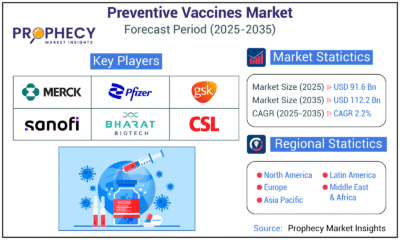
 Press Release5 days ago
Press Release5 days agoPreventive Vaccines Market to Witness Strong Growth by 2035
-

 Press Release5 days ago
Press Release5 days agoPet Food Nutraceutical Market Set for Robust Expansion Amid Rising Demand for Pet Wellness by 2035
-

 Press Release5 days ago
Press Release5 days agoWaterproof Structural Adhesives Market: A Comprehensive Study Towards USD 10.3 Billion in 2035




